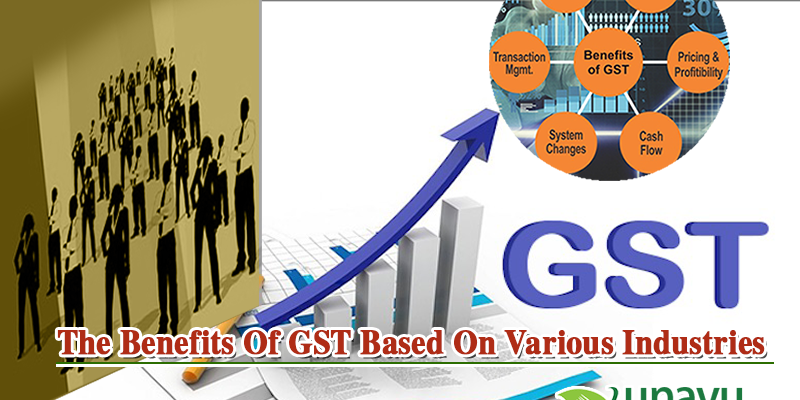“
As we understand and very well have been made aware of; that the nation is undergoing a quintessential tax reform enacted this month on 1st of July, which is anticipated to revolutionize the rules of tax system, while reducing the burden on the Aam Aadmi, as we all are hoping for and looking forward to.
But not many are aware of the fact that the realization of the Goods and Services Tax (GST) in India was not a recent hunch. The inception of the tax reform has claimed both time and patience and is expected to majorly alter the Indian economic system. The advent of GST in India was earlier suggested in the year 2000 by the then Prime Minister of the nation Atal Bihari Vajpayee.
GST is an all including indirect tax on utilization of goods and services around India, to substitute taxes levied by the central and state governments. It is a consumption based tax levied on the supply of Goods and Services which means based on the input tax credit method, it is charged and collected at every level of sale or purchase of goods or services. GST has superseded about 17 state and federal taxes.
The Centre will enact GST for a number of goods and services along 4 major rate slabs: 5%, 12%, 18% and 28 percent not withstanding of the region of purchase.
The suggested tax system will take the structure of “dual GST” which is simultaneously charged by central and state government.
This will include:
- The Tax levied by Centre -Central GST (CGST)
- Tax levied by State -State GST (SGST)
- Tax levied by Central Government on inter-State supply of goods and services-Integrated GST (IGST) The proposed tax system will take the form of “dual GST” which is concurrently levied by central and state government. This will comprise of:
Central GST (CGST) which will be levied by Centre
State GST (SGST) Which will be levied by State
Integrated GST (IGST) – which will be levied by Central Government on inter-State supply of goods and services.
Though the market pundits acknowledge the long-run advantages, involving the simplification of business transactions in the country and bringing the vast ranging informal economy inside the tax net of India. It is anticipated that in near term there could be major disarray and hitches, the step towards the new tax regime has the promise of causing immense disruptions to the shadow economy that is the medium of bread and butter for many.
Adding to the above mentioned facts,
- The Goods and Services Tax Law intends to create a well-organized indirect tax administration. As stated previously, GST will incorporate all indirect taxes taxed on goods and service, as well as State and Central level taxes. The GST system is an improvement on the VAT system, the notion being that an integrated GST Law will construct a unified national market.
- It is similarly estimated that Goods and Services Tax will progress the gathering of taxes as well as enhance the growth of Indian economy by getting rid of the indirect tax barriers amid states and integrating the country through a uniform tax rate.
As of now, all States and Union Territories, excluding Jammu and Kashmir, have affirmed their respective State Goods and Services Tax (SGST) Act. While West Bengal and Kerala went for the ordinance route, other State Assemblies have given a formal consent to the law.GST will be levied on value additions+ at each stage of the production cycle – buying raw materials, processing, manufacturing, warehousing and sale to customers – the monetary worth added at each stage to achieve the final sale to the end customer will be taxed. The final consumer will thus bear only the GST charged by the last dealer in the supply chain, with set-off benefits at all the previous stages. GST will be levied on value additions+ at each stage of the production cycle – buying raw materials, processing, manufacturing, warehousing and sale to customers – the monetary worth added at each stage to achieve the final sale to the end customer will be taxed. The final consumer will thus bear only the GST charged by the last dealer in the supply chain, with set-off benefits at all the previous stages.
SMB Connect is India’s largest integrated solution platform which links small and medium sized enterprises and entrepreneurs across the nation. Our mission is to build supportive communities by using effective solutions to connect with customers, providing advisory solutions, leveraging training programs and sharing the experiences of other businesses, so that SMBs can overcome all odds and succeed. Because we believe, Small Can Be Big!
We work on three fundamental principles- Connect, Knowledge and Growth to empower SMEs and to act as catalyst in their development process.
Small and medium enterprises in India & Small business Services are in full swing. SMBConnect provides India’s largest integrated solution platform which links SME company, Business advisory services and entrepreneurs.
Grow your small and micro enterprises & small business services in India with the help of business services and startup events. Learn to focus on creative small business ideas and Solution by analyzing roadmap of successful entrepreneurs in India and also enhance entrepreneurship development skills with large amount of educate small and medium enterprises & small business in india.
“
